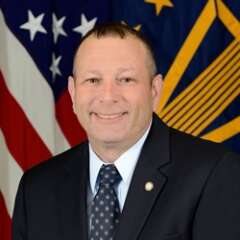Speakers
5 speakers
Date & Time
Feb 24, 2022 2:00 p.m. ET
Webinar
Date: On demand
Duration: 1 hour
Cost: No Fee
The Defense Department and other government agencies are on a tear to modernize their IT systems. As networks from the 1980s and 1990s continue to age and become more vulnerable, the government is trying to bring IT into the 21st century by rolling out modernization strategies and inking large contracts to build new architectures.
One of the biggest issues is that agencies need to ride two horses at the same time to keep business going while also upgrading.
“We call this changing digital environment the Fourth Industrial Revolution,” said Michael Parker, vice president and business development executive at Salesforce, during the discussion “Updating DoD’s Health IT Systems,” sponsored by Mulesoft. “It takes leadership and innovation and the ability to build coalitions in an alliance around those business communities, to bring them together as a collective governing body to invest wisely in the technology, but then leverage that technology to the greatest extent practical.”
That’s the model departments like the Defense Health Agency (DHA) are taking to rid themselves of old, duplicative and costly IT systems. Parker said DHA is unique because it’s taking in many different IT systems from the military services, much like a large company might bring in smaller businesses.
“They’re merging those technologies into a single instance of that technology like they’re doing with the health care system that exists throughout DoD,” Parker said. “This manual processing across the business mission area, many duplicative, disjointed legacy systems that aren’t as responsive as senior leaders and individual service members would expect them to be.”
APIs may be one way to solve the problem of duct taping together systems until the gap is bridged to a new system, according Ravi Bahti, manager for solution engineering at Mulesoft.
“Traditionally, if we look at integration, it has been very project centric approach. Point to point integrations are created to take care of the project needs,” he said.
One resource is to infuse integration with APIs.
“That is what we call as API-led-connectivity or API-led-integration,” Bahti said. “Applications need data, business processes need data, and in order to make the right decisions, right data should be available at the right time.”
APIs help do that by repurposing hard-to-reach data.
“Getting data from the authoritative data sources, in a very secure and governed way is the most tedious, difficult job,” Bahti said. API platforms provide all the necessary capabilities to create APIs on top of those authoritative data sources. Once these API’s are created, they become reusable building blocks.”
While using that data, agencies also need to be careful in making sure it is accessed safely and securely.
Jennifer Luong, a strategic security architect at Mulesoft, said zero trust is one of the best ways to ensure data going to APIs remains safe.
“It’s important to note that the security is a shared security responsibility between the product which enables the application of the security and the organization to implement and define their strategy in accordance with their policy and risk tolerance,” she said.
Learning objectives:
- Defense Health Agency Overview
- Cybersecurity at the Defense Health Agency
- Key Transformational Challenges for DoD
- API Integration into Systems
This program is sponsored by 
Complimentary Registration
Please register using the form on this page or call (202) 895-5023.
Speakers

Pat Flanders
Chief Information Officer, Defense Health Agency

Michael Parker
Vice President, Business Development Executive, Salesforce

Ravi Bhati
Head of Solution Engineering Team for DoD and Aerospace, MuleSoft

Jennifer Luong
Strategic Security Architect, MuleSoft

Scott Maucione
Defense Reporter, Federal News Network
Please register using the form on this page.
Have questions or need help? Visit our Q&A page for answers to common questions or to reach a member of our team.
